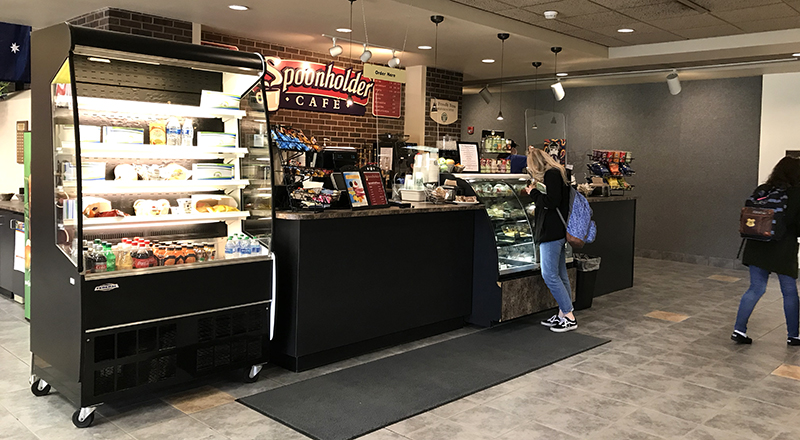by Chloe Pieper–College can be a stressful time in a student’s life. There are late nights and early mornings for studying, homework, and practice, but also part time jobs.
Students may feel they need a cup of coffee or an energy drink to get through their busy schedule. Almost every student can be caught carrying a caffeinated drink in their hand. Whether they use their flex points at the Spoonholder or at Buck’s, there are plenty of places on campus to fuel their caffeine needs.
Mary Scholl, a Spoonholder employee, loves making coffee for students. She has made drinks for students in the library’s cafe since it opened in 2005. There are plenty of options at the Spoonholder that don’t have caffeine for the students who don’t drink it.
Morningside has added more energy drinks called “Rowdy” in the Mustang Grill (Buck’s). These drinks contain 160 milligrams of caffeine and come in eight different flavors.
Caffeine is a natural stimulant mostly found in tea, coffee, and cacao plants. It works by stimulating the brain and central nervous system to prevent the onset of tiredness and keep you alert.
It is then absorbed from the gut and enters the bloodstream. From there, it travels to the liver and is broken down into compounds that can affect the function of various organs. It functions by blocking the effects of adenosine, which is a neurotransmitter that relaxes the brain and makes you feel tired.
Normally, adenosine levels build up over the day, making you increasingly more tired and causing you to want to go to sleep. Caffeine helps you stay awake by connecting to adenosine receptors in the brain without activating them. This blocks the effects of adenosine, leading to reduced tiredness.
Nursing student, Sara Clausen believes that Starbucks is an essential stop during her day. She jokes, “The only water I drink some days is the ice in my iced coffee. I live on caffeine to get me through my 5 a.m. clinicals after studying until 1:30 a.m.”
Gym junkies fuel their caffeine needs through a pre-workout supplement. Certain supplements can have from 100 milligrams all the way up to 600 milligrams of caffeine. There is a vast majority of flavors to pre workout. The supplement can be used to help people with focus and energy during a workout. Pre-workout kicks in after 20 to 30 minutes after drinking it with water or “dry-scooping.”
Dry-scooping is the process of putting a scoop of dry powder under your tongue and then taking a drink of your water. Alyx Curran-Lewis is a big fan of this technique. She says, “If I am in a rush to get to the gym for my boost of serotonin, I will dry scoop and go lift. This technique is not for everyone but it seems to work for me.”
The USDA and European Food Safety Authority recommends a daily dosage of 400 milligrams of caffeine. This amount is 2 to 4 cups of coffee a day. The only time it could be fatal is in a single dose of 500 milligrams of caffeine straight into the bloodstream.






Leave a Reply